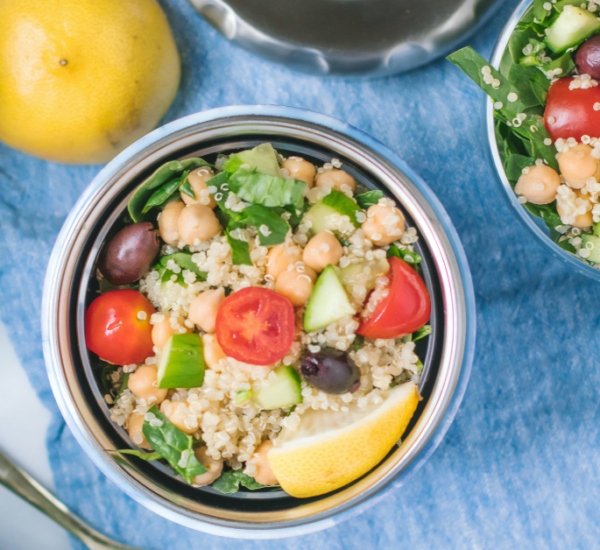“It seems like nearly everybody these days is ‘allergic’ to something.”
“Things like this weren’t around in my day!”
“They will be fine, it’s a treat, surely a little bit won’t hurt!”
Does this sound familiar? There’s a lot of confusion around food reactions, and lots of people seem to have them. As a paediatric dietitian I truly empathize with all the parents who come to see me with their children, feeling misunderstood by their friends and family who don’t understand the life-changing impact the children’s food reactions can have.
Have Food Reactions Increased?
Unfortunately, those well-meaning friends or family members statements are partly right – and I do mean only partly. There has been a huge increase in food reactions over this generation. Here are some numbers:
- Statistics show that, in Australia, hospital admissions or anaphylactic reactions have gone up five times in the last decade. Food allergy currently affects approximately 1 in 10 infants and 1 in 100 adults. 1
- A recent Australian study showed that within one Australian clinic the incidence of peanut allergy more than doubled between 1995 and 2007, whilst the number of food allergy clients seen increased twelve-fold. 2
- Coeliac Disease is one of the most common genetic diseases in the world, with 1 in 70 Australians being diagnosed with the disease.
Also read: 10 New Year’s Resolutions to Start Now
What is a Food Allergy?
A ‘true’ food allergy (by medical definition) is an immune reaction (IgE) in which reactions are usually reproducible (i.e. happens on contact every time) and typically occurs from a few minutes to a couple of hours after exposure. Anaphylactic reactions are a severe reaction that needs urgent attention, and can be life threatening. Anaphylaxis involves multiple body systems (i.e. respiratory and cardiac). Not everybody has anaphylactic reactions with their food allergy, but those that do need to be vigilant with food choices and have action plans if contact does occur.
We can develop allergies to any food, however 90% of food allergies are from these eight foods:
- Milk
- Eggs
- Peanuts
- Soy
- Wheat
- Tree nuts
- Fish
- Shellfish
What is Coeliac Disease (CD)?
Coeliac Disease is an inherited autoimmune disorder. It is classified as an autoimmune disorder, because the body is damaged by its own immune system in response to eating gluten containing foods. Coeliac Disease is NOT the same as gluten intolerance and traces DO matter. Gluten is the generic name for certain types of proteins contained in common cereals, namely wheat, barley, rye and oats.
With Coeliac Disease, on eating gluten the immune system attacks the small intestine, which is significant as the small intestine is important for absorbing a plethora of vitamins and minerals. This means Coeliac Disease can also lead to malabsorption, since your body cannot absorb the nutrients it needs to function properly. Some coeliac sufferers show no obvious signs or symptoms, where as other coeliac sufferers are diagnosed after tests for anemia, osteoporosis or symptoms of irregular bowel habits, or poor growth in children.
What is a Food Intolerance?
Unlike allergies and Coeliac Disease, food intolerance doesn’t involve the immune system. Many food intolerances are triggered by food chemicals, proteins or compounds (both natural and artificial) which cause reactions by irritating nerve endings in various parts of the body (similar to the way certain drug medications can cause side effects to those of us who are sensitive).
There are also food intolerance reactions caused by a deficiency of an enzyme to digest compounds (i.e lactose intolerance). Food intolerances are very hard to pinpoint, as reactions can be hard to replicate. One day you may be fine eating a food, then next day you may suffer a reaction. Symptoms of food intolerance can be anything from rashes, hives, headaches, fatigue, gut issues to mood, brain fog and irritability. Depending on the severity of the food intolerance, we can usually manage our symptoms by identifying and then controlling the amount of the triggers appropriately.
Also read: Top 10 Snacks to Have in Your Desk Drawer
Suspect You Have a Food Allergy?
If you suspect a food allergy firstly see your GP, who will send you to either get a blood test (called a RAST test) or to an allergist to get skin prick tests and appropriate advice and management plans. There are many tests marketed to the public for ‘allergy diagnosis’, but unfortunately only few have medical legitimacy (go to ASCIA for accurate testing). This is true for suspected Coeliac Disease too – see your GP.
Food intolerance is a little trickier to diagnose (other than lactose intolerance) so again a guided elimination diet is the best way to identify the appropriate triggers and ways to manage future reactions. Too often I see individuals who have been avoiding too many food groups unnecessarily as they have not been given an accurate diagnosis, or have not had appropriate advice post diagnosis.
Knowing the difference between food allergy, Coeliac Disease and food intolerance is very important, as this determines how best to diagnose and treat the conditions. If you are diagnosed with food allergy by your doctor, it is worth seeing a qualified dietitian who specializes in food allergy and intolerance to help assess your specialized dietary needs. Dietitians can ensure your diet is still adequate and balanced whilst avoiding the necessary allergens – this is especially important when children’s growth is involved.
References
- Mullins R J, et al Characteristics of childhood peanut allergy in the Australian Capital Territory 1995-2007 J Allergy Clin Immunol 2009 March; 123
- Osborne et al. Prevalence of challenge-proven IgE-mediated food allergy using population-based sampling and
predetermined challenge criteria in infants. J Allergy Clin Immunolol 2011; 127: 668-676
Useful Links
For more detailed information about food reactions and their diagnosis please go to:








